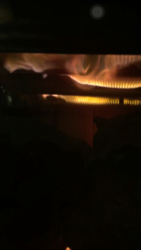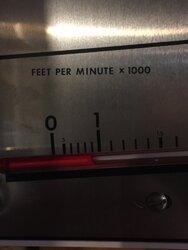installed a psg caddy and fired it up a few weeks ago. It puts off great heat and heats the house up no problem at all. Although when the house isn't calling for heat it builds up a bit of creosote. I have a field controls damper and my draft is set at .05-.06 w.c (I have a 27' chimney with a 6" SS liner that pulls about 1.5-2 w.c wjthout damper). I have one 90* adjustable elbow on the stove and the the creosote was enough to drip out of th seams on the elbow. If I had to guess my stove pipe isn't getting much over 200*. My wood is 2 year aged and has been inside my wood shead so I don't think Wer wood is the problem. it looks like I'm getting really good burns as the bars on the inside of the stove look like a gas grill. I have been thinking about increasing the draft a little to maybe .07-.08 w.c (I know it might burn a little more wood) but I prefer not to have this much creosote. Any input is greatly welcome.
Eric barber
I attached an image of the secondary burn which is how I believe it is supposed to look. I have a video but can't upload it

Eric barber
I attached an image of the secondary burn which is how I believe it is supposed to look. I have a video but can't upload it



